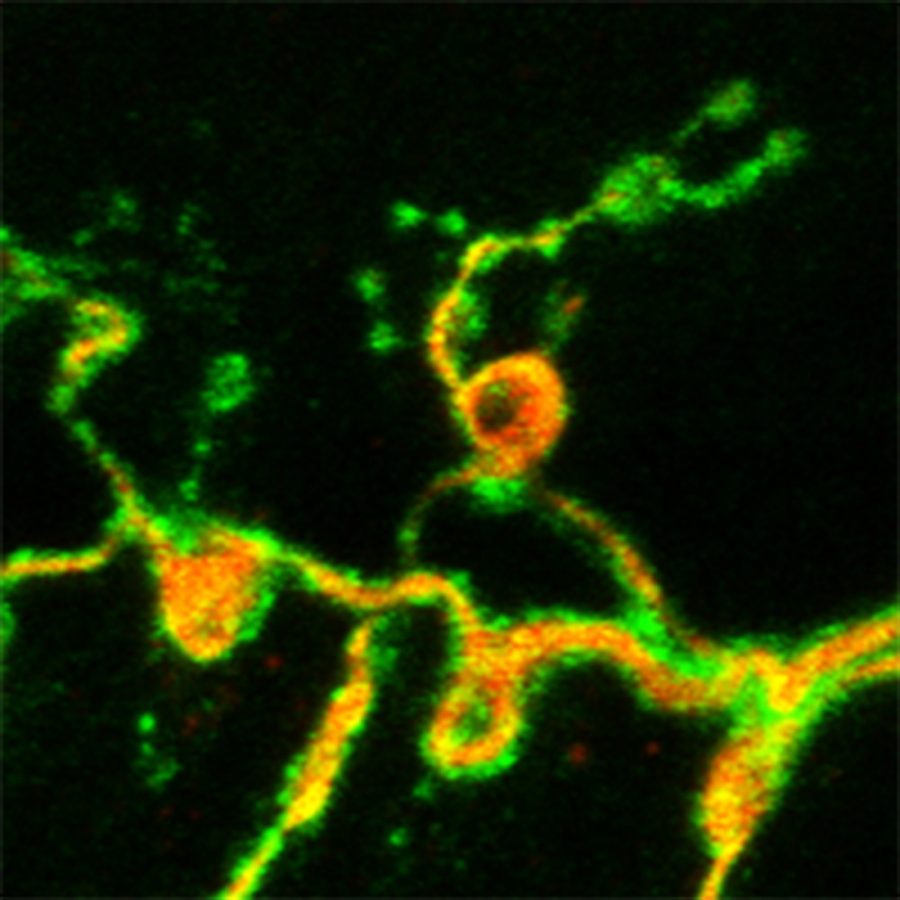People ranging from your best friend to Robert Downey, Jr. have taken the ALS Ice Bucket Challenge and funded research for the neurodegenerative disease amyotrophic lateral sclerosis. But what hasn’t gone viral is how researchers are studying the disease.
- RELATED POST: Local foundation hosts event to raise money for ALS
Daniela Zarnescu, an associate professor of molecular and cellular biology, has been working towards understanding the biology of the disease and possible treatments.
Zarnescu’s lab uses a fly model of ALS as a way to learn more about the disease. These flies have a human gene, TDP-43, inserted into their genome. TDP-43 has been linked to 95 percent of the human cases of ALS, according to Zarnescu. After TDP-43 insertion, the flies express the same symptoms as humans with the disorder, Zarnescu said.
“The objective is to see what TDP-43 might be doing, to promote disease or cause it,” said Andrés Morera, a doctoral candidate in molecular and cellular biology and a student working in Zarnescu’s lab.
The lab does genetic and drug screens on these flies to find new genes that might contribute to ALS and drugs that might treat the disease.
A screen is an unbiased search for genes or molecules, Zarnescu said.
“Think of [the screen] as a fishing expedition with a defect as a starting point,” Zarnescu said. “All these things that happen in people happen in flies, too, so we can use these defects as a place to begin our search.”
Essentially, it’s a sophisticated version of trial and error where different genes and drugs are tested using the flies to determine if they might affect ALS. So far, these fishing expeditions have led to some significant discoveries. Zarnescu said the laboratory found an abnormality in the flies that exactly matched an abnormality found in the autopsied spinal cord of a human who died from ALS.
The discovered gene is now being investigated as a cause of the abnormality. As more screens are run, more genes and drugs can be discovered or eliminated as possibilities, Zarnescu said.
In addition, Zarnescu’s lab has also begun using a metabolic approach to study differences in metabolism found in humans with ALS. Zarnescu explained that patients with ALS show hypermetabolism, which means their metabolism works too quickly. At rest, a person with ALS uses more energy than people without the disorder.
The discoveries made from the ALS studies might have impacts on other diseases as well. Many of the phenomena associated with ALS, including protein aggregates, are found in other neurodegenerative disorders, Morera explained.
Morera is studying how protein aggregates affect insulin signaling. Insulin signaling is important for the uptake and storage of glucose and other nutrients. Morera uses a variety of molecular techniques to determine how genes, proteins and elements of the insulin pathway all interact with each other.
The data the lab collects and publishes helps clarify how ALS and other related disorders work, which in turn helps other researchers move forward towards understanding and ultimately treating this debilitating disease. The search for a cure is complicated, but new discoveries are being made every day.
“I think that cure is a tough word,” Zarnescu said, “but in terms of treatment and improved prognosis, these are possible in the near future.”
—Follow Amy Nippert @DailyWildcat









